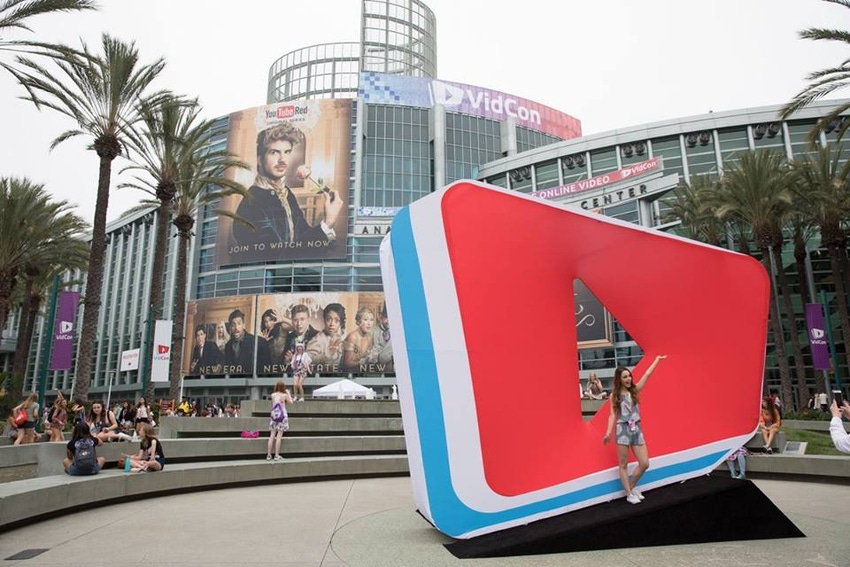If you thought video was big already, just wait. YouTube CEO Susan Wojcicki has shared her vision with the world, and it’s starting to look very real now.
June 23, 2017

If you thought video was big already, just wait. YouTube CEO Susan Wojcicki has shared her vision with the world, and it’s starting to look very real now.
It’s an aspect of the industry all the telcos have been trying to capitalise on, but must also be secretly dreading at the same time. There is a mountain of cash to be made off the back of the growing video trends, just look at the astronomical growth of Netflix, but the strain on the network is getting bigger and bigger every month.
YouTube is a prime example of this growth. For most, it is the poster child of the video revolution, the one example people look to when you need a helping hand on how video is being received by the masses. And Wojcicki did not disappoint during her presentation at VidCon this week.
“I’m pleased to announce that we crossed a big threshold: 1.5 billion logged in viewers visit YouTube every single month,” Wojcicki said. “That’s the equivalent of one in every five people around the world! And how much do those people watch? On average, our viewers spend over an hour a day watching YouTube on mobile devices alone.”
The freedom which is being offered to users through unlimited data plans is truly being seized. There might be a large proportion who are still on limited data plans and therefore restricting themselves to Wifi, but the perseverance of companies like T-Mobile US with unlimited plans is converting more people day-by-day.
One question which has been asked surrounding the upcoming 5G revolution is whether the cart is being put before the horse. Do users need 5G or is it being thrust open them as a means to generate extra cash for the industry which have become stagnant? Examples such as this are certainly arguments for the need for a network which is faster, while also offering greater capacity and coverage. After all, who wants to wait for a video to buffer on the train? We’re far too important for such trivial things.
Another welcome trend for the industry (but once again, perhaps worrying for the telcos) is the importance of VR. It’s a technology which is very similar to marmite; some think of it as a fad, while other see it as a revolution in the way we experience content. YouTube is firmly in the revolutionist camp.
“I also spoke about how we want to make VR more accessible and more affordable for viewers and creators,” said Wojcicki. “The reality is, filming 360-degree VR videos isn’t easy for most creators and some VR cameras are expensive. That’s why I’m thrilled that YouTube and Daydream have worked together on a new format, VR180, and new cameras, which make it easy and affordable for anyone to make VR videos.”
VR180 cameras from the likes of LG, Lenovo, and the Chinese company Yi will be available in the next six months or so, but it is not what you would deem 100% VR for the moment. The platform essentially allows developers to make more immersive 180 degree videos, but it is claimed to be more detailed and gives the user a greater sense of depth.
It might not be the holy VR grail, but it is definitely a step in the right direction. VR as a technology is not just going to appear overnight as some might hope. Like the introduction of 5G, there will be small baby steps over the next couple of years, allowing the market to keep pace and deliver the hardware at an affordable price to the consumer. It’s the incremental gain game which has worked out so well in other areas.
While this is encouraging and exciting for the world of developers, content producers and enterprise, all of whom are looking for more interactive ways to engage the consumers, the challenge for the telcos is becoming increasingly large. For video and VR to be as ground breaking as the industry hopes, the network needs to be there to deliver it.
Pessimists in certain countries might argue that this is a dream which will we will struggle to realize in the near future. Perhaps in countries like the US or Korea or Japan, there is possibility these experiences can be delivered in the next couple of years, but think about us poor sods in the UK. When are we going to get the network speeds to deliver such experiences? 2020? 2025? 2030?
The promise and deliver narrative is one which has been going on in every industry since the beginning of capitalism, but the telcos need to pull their socks up and make good on promises pretty sharpish.
About the Author(s)
You May Also Like








.png?width=300&auto=webp&quality=80&disable=upscale)


_1.jpg?width=300&auto=webp&quality=80&disable=upscale)


.png?width=800&auto=webp&quality=80&disable=upscale)